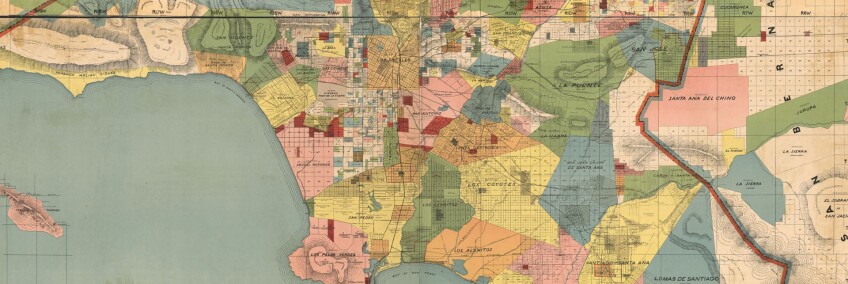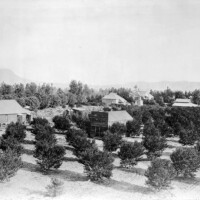The Lost Towns of Los Angeles County

Entire towns have vanished from the Southland.
The street grid of Morocco once stretched across the same gilded real estate occupied today by Beverly Hills. The ruins of a town named Minneapolis lie beneath Atwater Village. The independent city of Tropico melded with Glendale.
In an earlier age, geographic names were more ephemeral -- especially during boom years like those of the 1880s. Maps from that period, like this 1888 official county map, read as a catalog of failed real estate developments. Kenilworth. Studebaker. Nadeau. Gallatin. Clearwater.
Many of these settlements were never more than paper towns, existing only in the drawers of the county recorder's office. Between 1884 and 1888, developers platted more than 100 towns in Los Angeles County -- some on the fringes of established cities like Los Angeles and Pasadena, others on the open plains of former ranchos. Lots changed hands and fortunes were made, but few of the towns actually made an imprint on the landscape by the time boom turned to bust. (A few that succeeded: Burbank, Inglewood, Glendale.)
In some cases, it's only the names that have perished; the towns survive to this day under new identities. That's true of Marian, which we know today as Reseda. The town of Ivanhoe became Silver Lake. Toluca was first renamed Lankershim, then North Hollywood.
There are ghost cities, too – once-independent communities swallowed up by larger municipalities, often losing their identities in the process. Most have heard of Eagle Rock, Hollywood, San Pedro, Sawtelle, Venice, Watts, and Wilmington -- all independent cities that eventually consolidated with Los Angeles. But there was also Hyde Park, which the metropolis absorbed in 1923, followed by Barnes City in 1927. Long Beach merged with Belmont Heights in 1909. And the city of Tropico, which incorporated in 1911, became part of Glendale in 1918.


